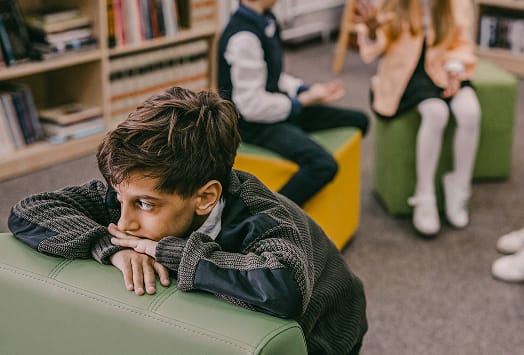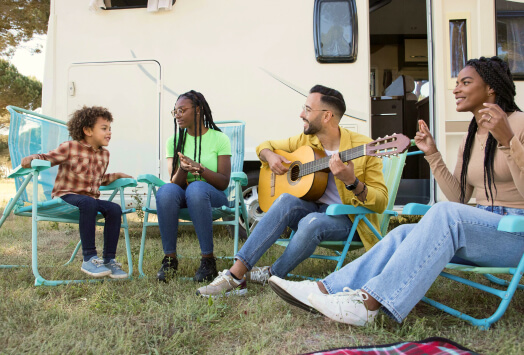Indigenous Peoples’ Day falls on October 11th this year and it is federally recognized, which means your child likely has the day off from school. You might remember this holiday as “Columbus Day” when you were growing up, but the focus has since shifted to celebrate and honor the histories and cultures of the people indigenous to our country.
Depending on your child’s age, they might already have heard about the colonization of North America and the indigenous people. But, it is important to know what they have learned and, if needed, disrupt harmful stereotypes and inaccurate information.
We’ve curated a list of resources created by and about indigenous people that you can use to educate yourself and your children on the importance of this day. As we continue to be anti-racist and raise anti-racist children, holidays like Indigenous Peoples’ Day give us a chance to commit to our values. Remember, culture is not a costume, so be respectful when you observe this holiday with your family.
Read: Books for children and young adults
A Coyote Columbus Story (Pre-Kindergarten - 1st grade)
Thomas King, an author of Cherokee descent, turns the story of Columbus on its head and helps children learn how to critically ask questions and challenge the myths surrounding the “founding of America.”
Hiawatha and the Peacemaker (Kindergarten - 3rd grade)
Sharing the story of Hiawatha and his spiritual guide, the Peacemaker, Robbie Robertson (of Cayuga and Mohawk descent) highlights the unification of the Iroquois, which became a blueprint for democracy that would later inspire the authors of the U.S. Constitution.
People Shall Continue (Kindergarten - 3rd grade)
This powerful story by renowned Acoma Pueblo poet and storyteller Simon J. Ortiz traces the history of the indigenous people of North America from the time of creation to the present.
In the Footsteps of Crazy Horse (Grades 4 - 7)
Written by Joseph Marshall III (Sicangu Lakota), this book intertwines fiction and nonfiction to chronicle the many heroic deeds of Crazy Horse, who was one of the last of the Lakota to surrender to the U.S. Army.
How I Became a Ghost: A Choctaw Trail of Tears Story (Grades 4 - 7)
Choctaw storyteller Tim Tingle weaves magic and history to share the story of the tribe's removal from their homeland and forced migration to Oklahoma.
An Indigenous Peoples’ History of the United States for Young People (Grades 7 - 12)
Indigenous human rights advocate Roxanne Dunbar-Ortiz reveals the roles that settler colonialism and policies of American Indian genocide played in forming our national identity.
Watch: TV shows and movies
Grandpa’s Drum: Molly of Denali
This 11-minute episode, written by Alaskan Native Princess Daazhraii Johnson, tells the story of indigenous children who were removed from their home and forced to attend boarding school. The show, Molly of Denali, is centered around a Gwich’in/Koyukon/Dena’ina Athabascan family in Alaska. You can use the Grandpa’s Drum Viewing Guide to help lead the conversation with your child after watching the episode.
Blackbird in Mi'kmaq
Maybe your children have heard you playing The Beatles in the car or around the house. If they are familiar with the song “Blackbird”, they might enjoy listening to this cover sung by indigenous students in their native language, Mi'kmaq.
Pachamama
Pachamama is a feature-length film, which tells the story of a young boy in the Andes Mountains who dreams of becoming a shaman. The story takes place during the Spanish Conquest. It is helpful to show your child that North America was not the only place where indigenous people experienced colonization.
Do: Indigenous Peoples’ Day activities
Native Land map
This interactive map will help you and your child understand the indigenous people of the land you now live on. Once you have this information, you can do research on the specific local nation(s) to get to know them. This will help make the knowledge stick for your child and connect them to the history.
Land back acknowledgement
Once you have done your research, collaborate with your child to write a land back acknowledgement that explains the history of the land as well as the current, continued colonization. It might be uncomfortable, but Dr. Kate Beane (Flandreau Santee Dakota and Muskogee Creek) says, “We have to try. Starting out with good intentions and a good heart is what matters most.” Consider making a monthly donation to the local nation(s) where you live as a land back offering.
Support: Discover organizations with your child
American Indian College Fund
The Fund distributes approximately 6,000 scholarships each year for American Indian students seeking to better their lives through higher education. You can donate directly to the organization or fundraise on their behalf. If your child enjoys baking or drawing, maybe you can work with them on a bake sale or art market and donate the proceeds to the American Indian College Fund.
Redhawk Native American Arts Council
The Council is dedicated to educating the general public about Native American heritage through song, dance, theater, works of art, and other cultural forms of expression. Explore their website, which includes information about online workshops and classes, as well as opportunities in-person in the Tristate area, to continue learning with your child.
Native American Rights Fund (NARF)
NARF is committed to upholding and protecting promises made to Native Americans through legal representation. Governed by a board of 13 indigenous people from nations around the country, they have successfully asserted and defended the most important rights of indigenous people and tribes in hundreds of major cases. Explain the history of failed and deceitful treaties to your child and why organizations like NARF are so important.
This is just a jumping off point. If you are looking for more resources to help you talk frankly with your children, head to our blog. Don’t forget, we are all human and we’re all learning. Let’s do it together!
















